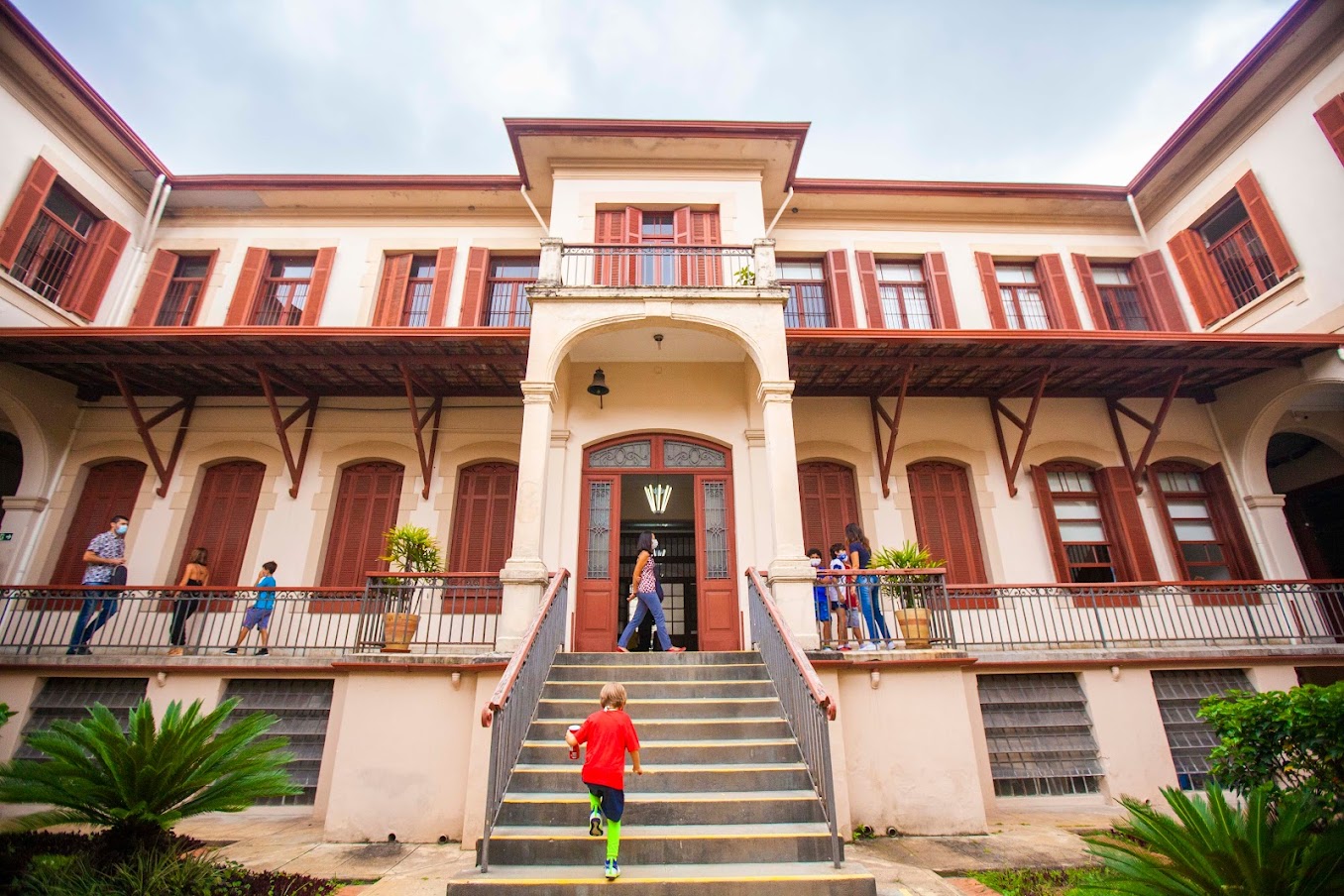





At the beginning of the 20th century, France attracted many Brazilians, who went there for their studies or their intense cultural life. On the other hand, São Paulo was beginning to experience great growth. Intellectuals, professors and deans of universities and cultural centers were committed to developing relations and exchanges between the two countries.




The forces came together to create a center of diffusion and convergence between Brazilian and French cultures. In 1923, after a pause caused by the First World War, the Sociedade Civil Liceu Franco-Brasileiro was founded – but the construction of the building on Rua Mairinque had already begun two years earlier, in 1921. called Pasteur, as well as the Foundation that maintains it.
With the growth in the number of students, the Franco-Brazilian bilingual course was established in 1963 in the building called Casa Santos Dumont, located on Rua Vergueiro and built with financing from French companies. In 2012, Brazilian education authorities fully recognized the basic education course offered from kindergarten to high school, creating a new and unique bilingual educational unit of the Liceu Pasteur Foundation.
During these 100 years, the two schools maintained by the Pasteur Foundation have helped students to learn, choose and gain autonomy.
From kindergarten to high school, children have contact with education in several languages: in addition to Portuguese, French and English, they also learn Spanish and German and can take Greek and Latin classes. At the end of the course, they have the option of taking the BAC, a French certification, the OIB, which is international, and also the Enem.


On February 28, 2019, the Grand Lycée Pasteur project officially opened, which will unify the traditional Lycée Pasteur (Vergueiro Unit) and Liceu Pasteur (Marinque Unit) schools into a Franco-Brazilian international school with a multilingual curriculum and capacity for 3,000 people. students. The Mairinque unit will gain 13,000 m² of construction and will have another 11,000 m² rehabilitated. There will be another 50 new classrooms. Together, the two units will form part of the Agency for French Education Abroad (AEFE), a network that already has 552 French schools located in 138 countries.
As a result, the Vergueiro unit will house students from Kindergarten and Elementary School, while Mairinque will house students from Elementary II and High School.
In addition to its pedagogical importance, the Grand Lycée Project is also a great legacy for São Paulo in restoring the Mairinque Unit and modernizing it to meet today’s pedagogical needs. The building was designed 100 years ago by the office of Ramos de Azevedo, the architect responsible for landmarks in the city such as the Municipal Theater and the Municipal Market.
The first change in students’ daily lives will take place right at the entrance, which will have a safe boarding and disembarkation area for those arriving by car. Those using school transport will have a separate entrance. Teachers and staff will have a parking lot with 200 spaces.
Natural lighting and ventilation will be privileged. Still within the environmental aspect, to carry out the project, each tree in the surroundings and inside the school was catalogued. The unit will use reused water for cleaning, toilets and irrigation of green areas. Photovoltaic panels will be installed to generate the energy consumed by the school.
The Grand Lycée Project was designed with the collaboration of teachers, students, staff and parents on issues such as internal circulation, special rooms and furniture. All chairs, for example, will have back support. Student desks are designed to be used individually, in pairs or in groups.
With the Grand Lycée Project, students will have new science and technology rooms equipped with the most advanced materials, such as 3D printers, a library and a hybrid space where they can socialize and study. The auditorium, with capacity for 350 people, can open to both the north and south covered patios.
For sports, the community will have a rugby field, a modality traditionally practiced at school, located in a roof-garden over the marquee that will cover part of the sports area. Among the other equipment, the Mairinque unit will have a semi-Olympic swimming pool, tennis court and multi-sport courts.
The Grand Lycée Project won the ABD Design Awards 2020, awarded by the Brazilian Association of Interior Designers, in the Heritage Restoration category. In 2022, the Project was also a finalist for the IFI Awards, from the International Federation of Interior Designers.